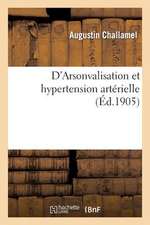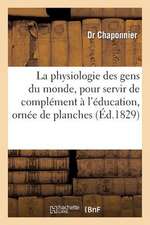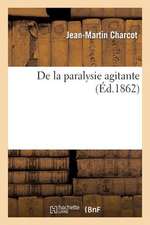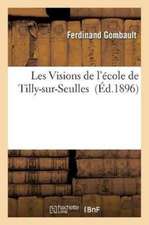5G Wireless Communication System in Healthcare Informatics: Advances in Antenna Design, Wireless Communication and Mobile Network Technology
Editat de Arun Kumar, Basant Aggarwal, Ghanshyam Singh, Korhan Cengiz, Manoj Guptaen Limba Engleză Paperback – 19 dec 2024
| Toate formatele și edițiile | Preț | Express |
|---|---|---|
| Paperback (1) | 337.30 lei 3-5 săpt. | +16.10 lei 4-10 zile |
| Taylor & Francis Ltd. – 19 dec 2024 | 337.30 lei 3-5 săpt. | +16.10 lei 4-10 zile |
| Hardback (1) | 840.26 lei 6-8 săpt. | |
| CRC Press – 9 mai 2023 | 840.26 lei 6-8 săpt. |
Preț: 337.30 lei
Preț vechi: 355.06 lei
-5% Nou
64.55€ • 67.22$ • 54.55£
Carte disponibilă
Livrare economică 18 februarie-04 martie
Livrare express 01-07 februarie pentru 26.09 lei
Specificații
ISBN-10: 103243659X
Pagini: 196
Dimensiuni: 234 x 156 x 15 mm
Greutate: 0.3 kg
Editura: Taylor & Francis Ltd.
Seria Advances in Antenna Design, Wireless Communication and Mobile Network Technology
Cuprins
Chapter 1
5G in Healthcare: A Survey
Sandeep Joshi, Vinita Tiwari, Basant Agarwal
1.1 Introduction
1.2 5G Architecture and Key Technologies for Healthcare
1.3 AI with 5G in Smart Healthcare
1.4 Applications of 5G in Healthcare and Open Challenges
1.5 Conclusion
Chapter 2
Advances of 5G Wireless Communication Systems in Healthcare Informatics
Ajay Yadav, Rashmi , Rahul Mukherjee , Ashok Kumar , Jitendra Kumar Deegwal , Ghanshyam Singh , Harpreet Vohra
2.1 Introduction
2.2 Healthcare Internet of Thing (H-IoT)
2.3 Healthcare Technology Transformation
2.4 Secure H-IoT
2.5 H-IoT Communication Protocols
2.6 Summary
Chapter 3
Beamforming in Massive MIMO Communications for 5G Technology
Ahmad Kamal Hassan, Muhammad Moinuddin, Abdulrahman U. Alsaggaf,Ubaid M. Al-Saggaf
3.1 Introduction
3.2 System Model
3.3 Characterisation of Outage Probability
3.4 Optimization of Beamforming Weights
3.5 Simulation Results and Discussion
3.6 Summary
Chapter 4
5G Enabled network technology trends for smart healthcare system
Satyanand Singh
4.1 Introduction
4.2 Capabilities and Challenge of 5G to Enhance Future Healthcare System
4.3 5G role in Remote Healthcare Potentials
4.4 AI and ML impact on smart healthcare system driven by 5G
4.5 Future New Healthcare Ecosystem with 5G
4.6 Personalized Healthcare System 5G Roles in Five-Way
4.7 Conclusion
Chapter 5
Non-Orthogonal Multiple Access Transmission for 5G Technology: Practical Consideration
Ibrahim Almujtaba, Abdulah Aljohani
5.1 Introduction
5.2 Objectives
5.3 Related Literature Review
5.4 The System Model & Result
5.5 Conclusions
Chapter 6
Comparisons of UTD-PO and FKE Models for Path Loss Prediction over an Irregular Terrain
Yashu Shanker, D. K. Lobiyal
6.1 Introduction
6.2 Proposed Analysis
6.3 Results and Discussion
6.4 Conclusion
Chapter 7
Integrated Blockchain and MEC Systems Empower Healthcare Services
Amira A. Amer , Tawfik Ismail
7.1 Introduction
7.2 Enabling Technologies for Healthcare in 5G
7.3 Blockchain for Healthcare
7.4 Integrating Blockchain and MEC
7.5 Research Opportunities and Challenges of Healthcare
7.6 Research Opportunities Blockchain and Edge Computing in Healthcare
7.7 Case Study: Real-Time Patient Monitoring
7.8 Conclusion
Chapter 8
Optimized Cognitive Radio Networks for 5G Technology
Mohammed Ali Ahmed Alrefaei, Ubaid M. Al-Saggaf, Muhammad Moinuddin, Asmaa U. Al-Saggaf
8.1 Introduction
8.2 Related Literature Review
8.3 System Model: Non Cooperative Spectrum Sensing in the CRN
8.4 Derivation for the Probability for Detection and Probability of False Alarm
8.5 Proposed Heuristic Methods for the Spectrum Sensing Optimization
8.6 Results and Discussion
8.7 Summary
References
Chapter 9
Gamified Wearables in Childhood Obesity Therapy Driven by 5G Wireless Communication System with special emphasis on Pacific Island Countries
Pragya Singh
9.1 Introduction
9.2 Defining Obesity
9.3 Global trends among children
9.4 Risk Factors for childhood obesity
9.5 Effects of childhood obesity
9.6 Self-determination theory (SDT) and obesity prevention
9.7 Gamification
9.7.1 Advantage of gamification for use in health and wellbeing
9.8 Wearables
9.9 Limitations of technology-based interventions
9.10 Briefs of intervention programs that have used gamification or wearables in the prevention and control of adolescence and childhood obesity
9.11 Conclusion and Recommendations for future research
Chapter 10
Role of photonics for the realization of future 6G communication systems
Kamal Kishor Choure, Manisha Prajapat, Ankur Saharia , Nitesh Mudgal , Manish Tiwari , Puspa Devi Pukhrambam, Ghanshyam Singh
10.1 Introduction
10.2 Enabling technologies for 6G communication systems
10.3 Photonics for 6G communication system
10.4 Conclusion
Chapter 11
MIMO Antenna for IoT and ISM Band Applications
Inderpreet Kaur, Hari Kumar Singh, Sanjeev Sharma, Navneet Singh, Yash Bhardwaj
11.1 Introduction
11.2 Antenna Design
11.3 Evolution Design of Compact 4 Port MIMO Antenna
11.4 Discussion and Results
11.5 Performance Comparison
11.6 Conclusion
Chapter 12
Role of Terahertz Photoconductive Antenna in Future Healthcare Informatics
Shyamal Mondal, E. Nisha Flora Boby, Vaisshale Rathinasamy
12.1 Introduction
12.2 Applications of THz in health care systems
12.3 Methods of THz generation
12.4 THz sources using Optical radiation
12.5 THz sources combining Optical, electronic and magnetic fields
12.6 Importance of PCA
12.7 Classifications of PCA
12.8 Methods of THz detection
12.9 Equivalent circuital analysis of PCA
12.10 Numerical simulations of PCA
12.11 Experimental analysis through THz spectroscopy and imaging
12.12 Conclusion and Future aspect
Notă biografică
Dr.Manoj Gupta received his Ph.D from University of Rajasthan, Jaipur (India). He received his M.Tech in Digital Signal Processing from H.N.B Garhwal Central University, Uttarakhand, India and B.Tech degree in Electronics and Communication Engineering from Institute of Engineering & Technology, M.J.P.Rohilkhand University Campus, Bareilly (U.P) India. His Overall Experience is more than 15 years. He has published many research papers in international journals and National/International conferences. He has Granted Two Patent and Two Indian Research Copyright and published 5 Patents in his credit. His research interests are in Biomedical Signal and Image Processing, Soft Computing, Computational Intelligence, Biomedical Engineering, Artificial Intelligence and Antenna and Wireless Communication Systems. He is a Member of many Professional Bodies such as IEEE, IACSIT, ISTE, IAENG and many more. He has served as Technical Programme Committee (TPC) Member and Reviewer in various International Conferences such as, ICCIA 2020, ICCIA 2019 ICSIP 2018, ICSIP 2017, ICSIP 2016, AIPR 2017, AIPR 2016, ICCIA 2018, ICCIA 2017, ICCIA 2016, ICNIT 2018 and many more. He was invited for Keynote Speaker/Invited Speaker in 2017 2nd IEEE International Conference on Signal and Image Processing (ICSIP 2017), August 04-06, 2017 in Nanyang Executive Centre, Singapore and Invited for Keynote Speaker in 2017 International Conferences on Public Health and Medical Sciences (ICPHMS 2017), May 23-24, 2017 in Xi¿an, China. He is Associate editor and Reviewer of many international Journals. His name has been listed in Marquis Whös Who in Science and Engineering® USA in 2012, 2016 and Marquis Whös Who in the World® USA in 2010 (28th Edition), 2011 (29th edition) and 2013 (31st edition).
Dr. Arun Kumar graduated obtained his doctorate is in the field of Knowledge mobile communication system which was awarded in 2016. He has served in the field of education for over 7 years and is currently in service at New horizon college of Engineering, India. His current research interests are in the area of, 5G, OFDM, CDMA, spectrum sensing, peak to average power ratio, advance modulation schemes, Antenna and UWB system. He is a member of IEEE. He has published more than 40+ paper in SCI/Scopus Indexed Journals. He is Reviewer of many SCI and Scopus indexed international journals.
Dr. Basant Agarwal is an Assistant Professor at the Indian Institute of Information Technology Kota (IIIT-Kota), India. He holds a Ph.D. and M.Tech. from Department of CSE, MNIT Jaipur. He has worked as a Postdoc Research Fellow at the Norwegian University of Science and Technology (NTNU), Norway, under the prestigious ERCIM (European Research Consortium for Informatics and Mathematics) fellowship in 2016. He has also worked as a Research Scientist at Temasek Laboratories, National University of Singapore (NUS), Singapore. He has published more than 60 reputed conferences and Journals. Dr. Agarwal is serving as a senior member, technical program committee member, member of editorial board/reviewer board of various renowned international conferences/journals such as Knowledge-based Systems, IEEE Intelligent Systems, Information Processing and Management to name a few. His research interest is in Artificial Intelligence, Text mining, Natural Language Processing, Machine learning, Deep learning, Intelligent Systems, Expert Systems and related areas.
Asst. Prof. Dr. Korhan Cengiz was born in Edirne, Turkey, in 1986. He received the B.S. degree in electronics and communication engineering from Kocaeli University, Kocaeli, Turkey, in 2008, the M.S. degree in electronics and communication engineering from Namik Kemal University, Tekirdag, Turkey, in 2011, and the Ph.D. degree in electronics engineering from Kadir Has University, Istanbul, Turkey, in 2016. From 2009 to 2013, he was a Research Assistant at the Department of Telecommunications, Namik Kemal University. From 2013 to 2018, he was a Lecturer at the Department of Telecommunications, Trakya University. Since 2018, he has been a Assistant Professor with the Electrical-Electronics Engineering Department, Trakya University, Edirne, Turkey. He is the author of over 30 articles. His research interests include wireless sensor networks, routing protocols, wireless communications, statistical signal processing, indoor positioning systems, power electronics and 5G. He is an Editor of the Turkish Journal of Electrical Engineering and Computer Sciences. Dr. Cengiz¿s awards and honors include the Tubitak Priority Areas Ph.D. Scholarship and the Kadir Has University Ph.D. Student Scholarship.
Ghanshyam Singh is a Full Professor with the Department of Electronics and Communication Engineering, Malaviya National Institute of Technology (MNIT) Jaipur, India. He worked as visiting research scholar/professor at HW University Edinburgh (UK), UEF Joensuu (Finland) and Keio University (Japan). He has published over 150 research articles in peer reviewed journals and conferences. He is a senior member of SPIE, OSA, IEEE and a Fellow of OSI and IETE. He is the recipient of the 2017 IEEE Distinguished Lecturer Award of the Photonics Society. In the past, he had joint research collaborations with the researchers from Keio University (Japan), University of Vienna (Austria), LNPU (Ukraine) and Cairo University (Egypt). He is presently collaborating on a multi-institutional project with researchers from University of KwaZulu-Natal (South Africa), PSUTI Samara (Russia) and USTC Shanghai (China) for a BRICS STI Framework Program. His current research interest includes micro and nano-structured photonic devices for integrated photonics, nano-structured materials, Quantum photonics, photonic crystal fibers, etc.











